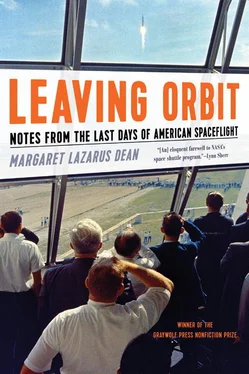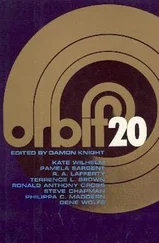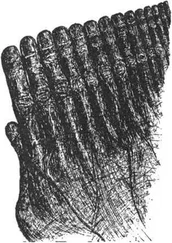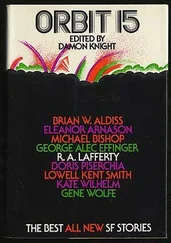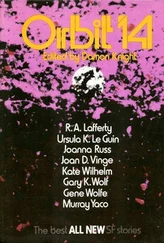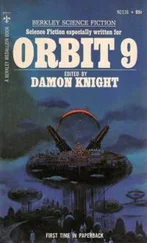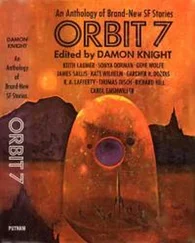Each of these places has a different look and feel to it, a different history and a different idea of itself. At certain moments I think to ask Omar what it’s like to have grown up on such an uncertain landscape, but I can never quite think how to phrase the question.
I reach the 528 causeway where it spans the Banana River. Hundreds of people drive across this causeway, this unbeautiful strip of land, every day to get from Merritt Island to Cocoa Beach and back, but today is one of the few days of the year when this scrubby margin of sand and grass becomes precious territory. The RV people have been camped here for days, staking their claims, and when I pull up, I find clumps of cars already parked, families setting up as if for a day at the beach. It’s even busier than I had anticipated, almost completely packed, though the launch is still nearly nine hours away.
I find one of the last spots with an unobstructed view on the north side of the causeway. I’ve packed a cooler with food and cold drinks, books to read, student work to grade, a transistor radio, sunscreen, bug repellent, and emergency supplies in case I’m stuck in traffic for an extended period of time after the launch. By the time I set up my lawn chair and settle in, the astronauts are suiting up and the tanking of cryogenic gases has begun—I watch all this streaming live on the NASA app on my phone. All around me, couples and families are setting up their lawn chairs, talking and playing, eating sandwiches, smearing sunscreen on each other, listening to their radios, throwing Frisbees, going for walks. Most of all, people are looking out, either with binoculars or with the naked eye, toward where Discovery stands on pad 39A. And all of them are listening to the NASA announcer on their radios and watching the NASA app on their phones, shielding their screens with one hand against the glare of the white Florida sun.
Discovery stands upright on the horizon, fourteen miles north of us across the Banana River. It looks about the size of a paper clip. Fourteen miles sounds far, but this spot is one of the very best vantage points for viewing a launch—that is, for people who don’t have access to NASA grounds. And the only people who have access are employees (including Omar and his father) and credentialed media. NASA gives credentials only to journalists who can prove they are representing an established media outlet or who can show a contract with an established publisher. When I was working on my novel, it struck me as tragic that this policy excluded me altogether in a catch-22—I couldn’t get a contract with a publisher until I had written my book, and I felt I couldn’t write my book properly without first getting access to the Kennedy Space Center. (Though I did have to admit, especially after the terrorist attacks of 2001, that a policy allowing someone like me unfettered access to a secure government installation would be in effect a policy without security at all, since any lunatic could claim to be “working on a novel.”) So I paid for a ticket to ride the tourist bus, and I drove to a causeway in the middle of the night to watch the launch of STS-102, Discovery , a beautiful night launch in unseasonably cold weather that lit up the sky for miles around. I had to write the parts of my novel that took place on the grounds of the Kennedy Space Center using films, pictures, guesswork, and sheer fabrication—all the more reason to be terrified by that first e-mail from Omar, an eyewitness to my omissions and errors.
At any rate, my lack of press credentials today is a mixed fate. Although part of me wants access to the NASA viewing site from which Norman Mailer watched the launch of Apollo 11, I also want to see what it’s like to watch a launch with other regular space fans, with people who have taken time off work to travel out here to see this event because they care about it, not because this is their job.
* * *
First-time visitors tend to imagine sitting at the base of the stack and feeling the heat of ignition on their faces, but this a misunderstanding caused by the footage we’ve all seen in movies. Those sequences are shot using remote cameras; any living thing that close to the launchpad would be killed instantly. Even the emergency rescue teams wait out the launch from bunkers three miles away. An explosion on the launchpad, always a risk with tons of rocket fuel coursing through many miles of fuel lines, would destroy everything in sight.
I check my phone: T minus eight hours and counting. Because I’ve been to a launch before, I know that spaceflight is all about waiting. Five hours, eight hours, twelve hours. First-timers are often confused, then annoyed, then stupefied by this waiting. You can spot them the minute they pile out of their cars too quickly, with too much bounce, their adrenaline high as they scan the horizon for the launch gantry and point and shout, “There it is!”
Relax. There it will remain, until no earlier than 4:48 p.m., or maybe until tomorrow, or maybe until May. Space fans need to learn to pace themselves. Best not to use up all of your enthusiasm too soon. If there’s a scrub you’ll feel disgusted and vaguely humiliated; you will mistakenly view the scrub as a failure of NASA’s, and this will mark you as an outsider more than anything else. Insiders know that scrubs are part of spaceflight.
While I wait, I read from Of a Fire on the Moon. Norman Mailer gripes about being packed into buses with the other journalists, all of them sweating through their shirts and ties, smoking and cursing the brutal Florida heat. I have the luxury of driving my own air-conditioned car; instead of a shirt and tie I wear a sundress, a beach hat, and enormous sunglasses that I hope make me look like Joan Didion.
When Norman Mailer gets off the bus at the Press Site, he recounts his impressions (in the third person) of feeling slightly disconnected from the events happening so near yet so far away. He says that people had built up for him how unforgettable the launch experience would be, that he had been promised that the ground would shake. But he couldn’t match his lived experience with this expectation. “He had no sense at all of three psyches full of awareness on the edge of the horizon. Just that gray stick out there.” I see it too: only with binoculars does that gray stick come into focus as black-and-white Discovery against its orange external tank, flanked by white solid rocket boosters. The astronauts’ “psyches full of awareness” (six, in this case) are as hard to imagine today as they were in 1969. The idea of that gray stick lifting itself into the sky is still as hard to imagine as it was then, the fact of people on it just as wondrous.
* * *
Discovery first flew in 1984, the third orbiter to join the fleet. It was named for one of the ships commanded by Captain James Cook. Space shuttle Discovery is the most-flown orbiter; today will be its thirty-ninth and final launch. By the end of this mission, it will have flown a total of 365 days in space, making it the most well traveled spacecraft in history. Discovery was the first orbiter to carry a Russian cosmonaut and the first to visit the Russian space station Mir. On that flight, in 1995, Eileen Collins became the first woman to pilot an American spacecraft. Discovery flew twelve of the thirty-eight missions to assemble the International Space Station, and it was responsible for deploying the Hubble Space Telescope in 1990. This was perhaps the most far reaching accomplishment of the shuttle program, as Hubble has been called the most important telescope in history and one of the most significant scientific instruments ever invented. It has allowed astronomers to determine the age of the universe, postulate how galaxies form, and confirm the existence of dark energy, among many other discoveries. Astronomers and astrophysicists, when they are asked about the significance of Hubble, will simply say that it has rewritten the astronomy books. In the retirement process, Discovery will be the “vehicle of record,” being kept as intact as possible for future study.
Читать дальше
